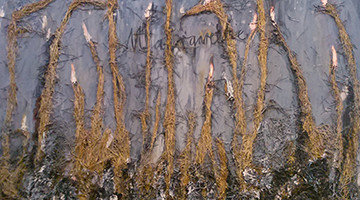Hot Topics
Sustainability
In the past two decades museum practitioners have experienced much change, for example:
- Economic booms and busts
- Changes of government cultural funding policies
- Transformation from homogenious to multi-cultural societies
- Transition to information-based economies from formerly industrial or resource based ones
- Two to threefold increase in the number of people with higher educational attainment, especially among women
- Dramatic increase in the number of museums
- Rise in the total attendance at museums.
Museums are one of the great institutional success stories of the last 250 years and people who aspire to build and to sustain civil society seek to establish museums. The term ‘civil society’ refers to an idea of community in which citizens enjoy equal opportunity to participate in public life and culture. It is significant that in our time museums are seen as embodying civil society values such as openness and universal access as well as trust and freedom of expression and debate
Yet within this museum success story, we seem to see the seeds of our decline. Some people focus on the fact that while overall attendance has increased, so too has the number of museums, and as a result many museums have fewer visitors. There are winners and losers! Other critics focus on the limitations of public funding and decry that some museums have cared less for their collections than for public access and “social equity.” Still others see evidence of decline in the intellectual level of museums as a result of catering to commercial interests of sponsorship and tourism.
Since all of us live at least a part of our lives in the non-museum world, we know that these issues are not limited to museums; but are challenging all aspects of the public realm. It is perhaps more helpful to look at these issues as they impact on long term museum sustainability and what strategies museums might usefully apply.
Here is a definition of sustainability that is both broadly applicable and useful for museums:
The ability of a system to function into the future without being forced into decline through the overloading of the key resources upon which it depends.
There are five key resources upon which museums depend:
- Collections – the products of nature and human labour and creativity
- Ideas -- intellectual life
- Community support
- Energy -- as in buildings, heat, lighting, labour
- Money
Each of these five key resources is currently under duress through overloading – potentially leading to decline. Each situation is quite different. Some museums are collections rich, but poor in ideas: the staff may be isolated, non-professional, or just ‘stale’. Some museums are rich in capital funds for new exhibitions but poor in ideas and community support so they turn to entertainment rather than creatively utilizing collections and authentic stories to engage the public. Some museums are rich in energy in that they have a new building; but they threaten the “ecology” of existing museum systems by draining community support; or they do not have adequate operating funds to run the building. There are numerous scenarios, many of them familiar ones. What becomes apparent is that these five key resources are interdependent; and therefore an increase in any one or two resources (even money) does not fully prevent overloading of other resources . . . does not fully prevent decline.
Fortunately there are two processes that people who work in museums and people who work with museums can use to augment all five key resources thereby helping increase sustainability: collaboration and planning.
Collaboration is a powerful process for increasing museum sustainability because it can reduce the need for scarce resources. Collaboration of staff amongst several museums and other organizations) reduces costs and stimulates more ideas; collection sharing increases the use of a collection resource; the merger of two separate museums into one could increase public service and community support for the one new institution and decrease expenses and energy. The downside of collaboration is that it is initially very labour intensive; but the outcome in terms of sustainability can be very significant.
It is often said that the future is the only thing we can control; so planning is the process we use to control the future (or to give ourselves that illusion). Planning is an effective strategy for museum sustainability because it helps museums anticipate their needs and allocate resources more efficiently and effectively.





